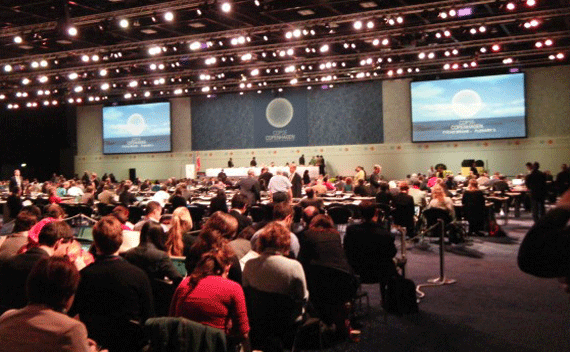Enough with the Kyoto Circus
More on:
I had nice things to say on Tuesday about India’s proposals for transparency and technology. But the full text of the proposal is out, and there’s a big catch. India’s environment minister, Jairam Ramesh, writes:
“Let me also say that without a firm commitment to have a second commitment period for the Kyoto Protocol and improved mitigation pledges from the USA, the MRV/ICA framework I am suggesting will simply not fly.”
There is roughly zero chance that the United States will improve its mitigation pledges; Ramesh knows very well that even the current pledges are (unfortunately) a big political stretch. Odds are awfully low on a second commitment period for Kyoto too, particularly after Japan explicitly rejected one earlier this week. That makes for two ways to interpret his caveat. The first is that he’s trying to have his cake and eat it too: he gets credit for proposing a way to solve the transparency problem, but knows that there’s no way it can be accepted. I’m skeptical of this explanation, since he tends to negotiate in good faith. The second is that he’s included the caveat to prevent the proposal from being stillborn. Without the hedging, he’d get attacked within India and by some of his BASIC partners; by including it, he’s able to get the proposal into the negotiating mix. The proposal can now get debated independently, ultimately getting incorporated in a negotiated outcome without all the caveats that initially came with it.
I’m partial to this second interpretation, but it’s got a couple problems. First, statements you expect to disappear have a habit of taking on lives of their own; others, including China, may accept the Indian proposal but insist on the Kyoto quid pro quo. Second, Ramesh himself seems to be hammering the Kyoto part pretty hard in his public statements, though he’s left a little wiggle room, saying that success without a Kyoto extension is “remote”, but not saying that it’s impossible.
Which brings me to my bottom line: insisting that Kyoto be extended as a condition for following through on the Copenhagen Accord is entirely inappropriate. The Accord is a political deal among national leaders, and there are only two references to Kyoto in it. Here’s the first:
“[the parties request] the Ad hoc Working Group on Further Commitments of Annex I Parties under the Kyoto Protocol to continue its work”
Fair enough: Let’s accept that the Kyoto parties will continue their work for now. (In that narrow sense, Japan should back down a bit.) But there’s nothing here that says that they need to agree to a second commitment period. Here’s the second:
“Annex I Parties commit to implement individually or jointly the quantified economywide emissions targets for 2020, to be submitted in the format given in Appendix I by Annex I Parties to the secretariat by 31 January 2010 for compilation in an INF document. Annex I Parties that are Party to the Kyoto Protocol will thereby further strengthen the emissions reductions initiated by the Kyoto Protocol.”
Once again, there’s nothing here about another Kyoto commitment period. In fact this part can be (and often is) read as indicating that Copenhagen Accord commitments are the successors to Kyoto ones.
So let’s be clear about what’s going on. A balanced political deal was made at Copenhagen. Many countries that made that deal are now insisting that they’ll only follow through on their side of the bargain if something deliberately excluded from the original deal – new Kyoto commitments – happens. That’s wrong.
(Photo: Courtesy Steven Shultz)
More on:
 Online Store
Online Store
